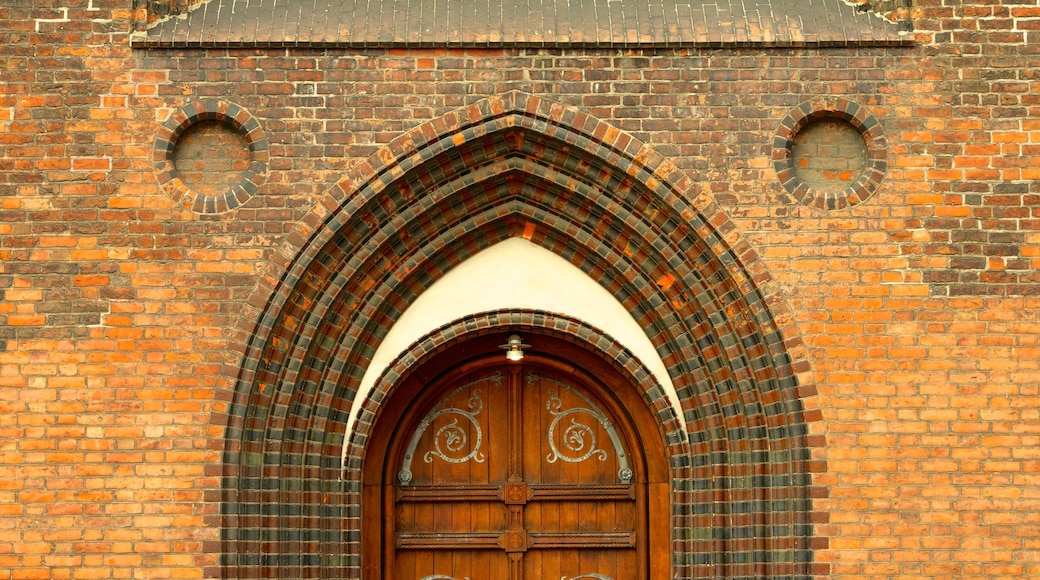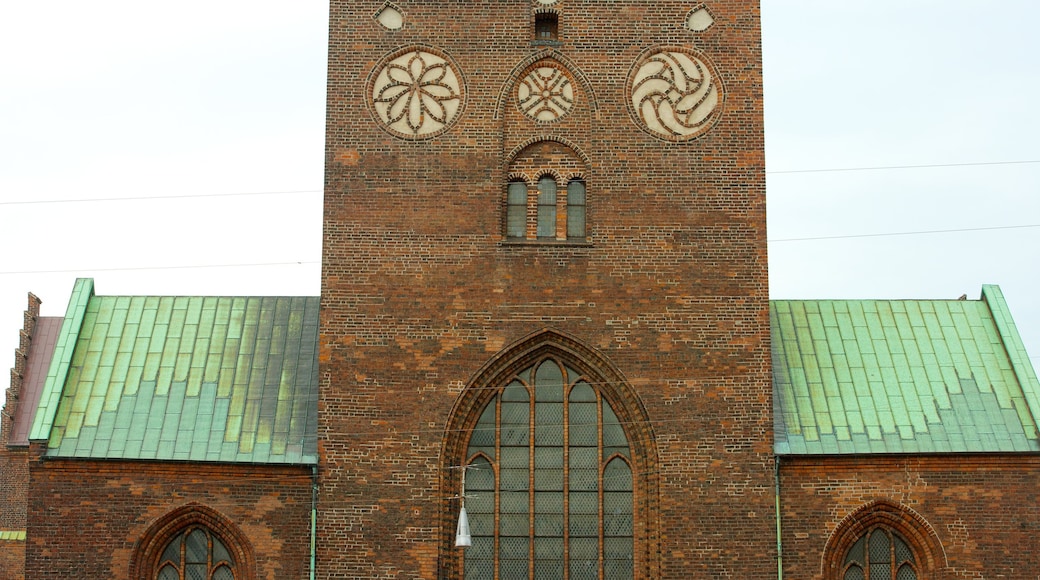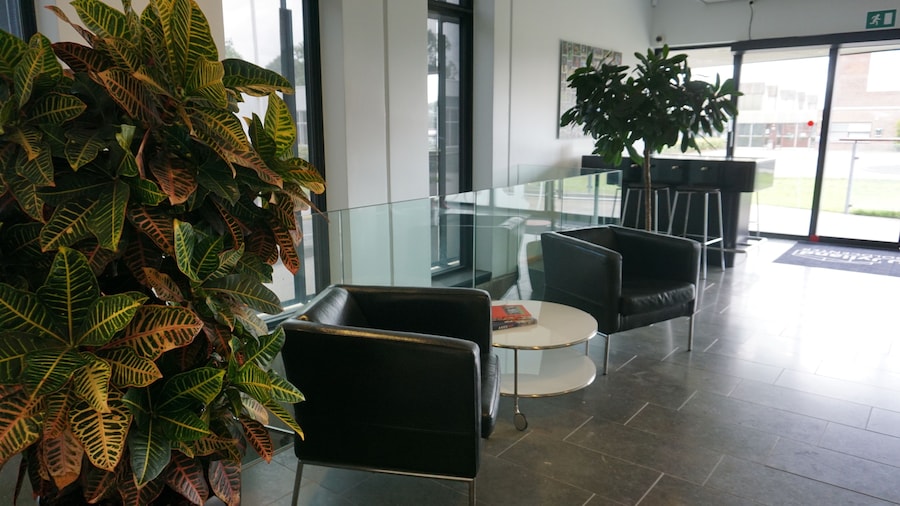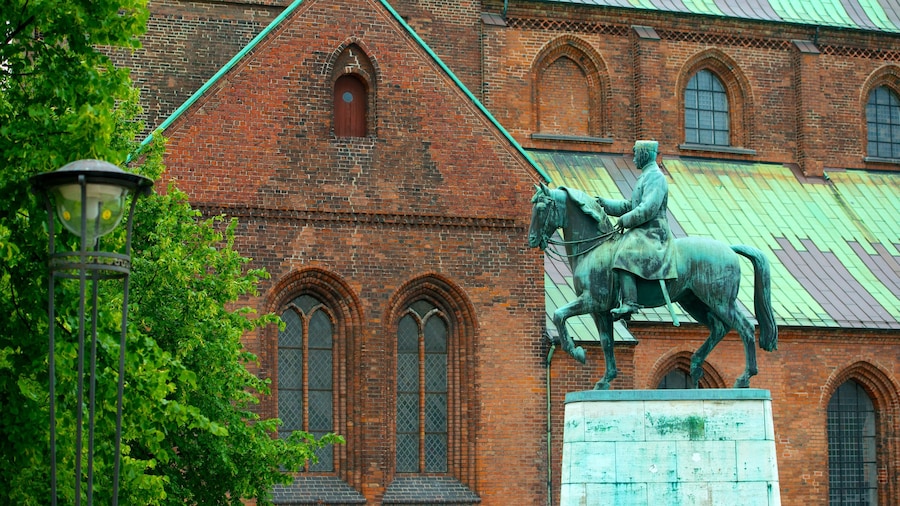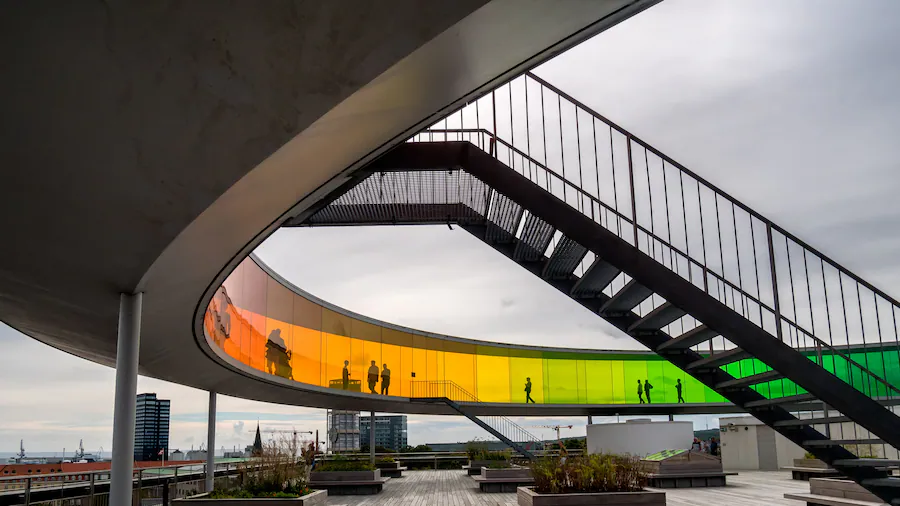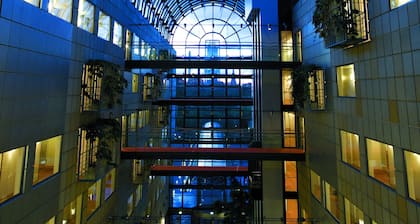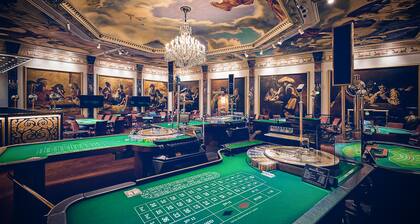Learn the complicated history of the Church of Our Lady (Vor Frue Kirke) in Aarhus. In the church's crypt is another stone church, the original one of the site. It's believed to have been built from 1060 onwards. Over the centuries it was abandoned and filled with soil. It was uncovered in the 1950s.
To fully explore the Church of Our Lady, you are best to visit on a weekday or Saturday as it is open for churchgoers only on Sundays and holidays. Contact the church office prior to arriving to organize a free guided tour.
Construction of the Church of Our Lady began in the 1190s. Around the year 1230, Dominican friars took over the church and began renovating it. Today, there are three separate parts of the church: the great central nave, the Chapel in the crypt and the Abbey Church. As you walk through the brick church, admire the narrow windows that let light through to its grand floor. Look for the frescoes depicting coats of arms and noble families in the choir area. Follow the stairway beneath the main nave of the Abbey Church and see the Crypt Church that was hidden for centuries.
The crypt is constructed completely of tufa, a variety of limestone, and is both the oldest stone church and the oldest arched space in Scandinavia. Once excavated, the crypt church was restored and now hosts a weekly mass. Explore the dark and atmospheric room, which is almost than 1,000 years old.
Originally named after St. Nicholas, the central church became known as the Church of Our Lady in the mid-1500s. Today, the church remains active and is the base for a large community of churchgoers in Aarhus.
The Church of Our Lady is located in central Aarhus and can be reached on foot or bike in minutes from many downtown hotels. While free and open daily, admission on Sundays and holidays is reserved for those wanting to attend a service.


